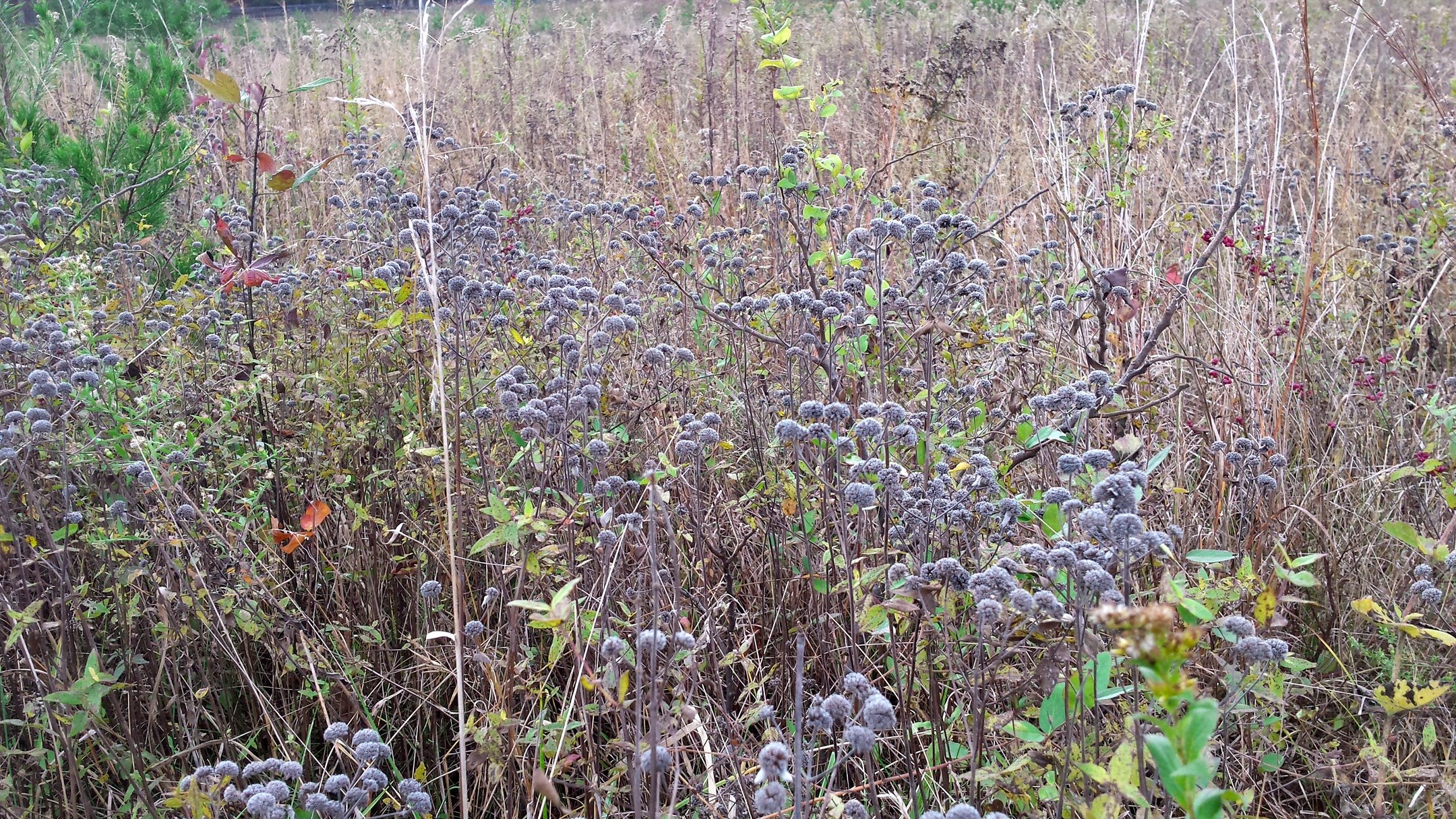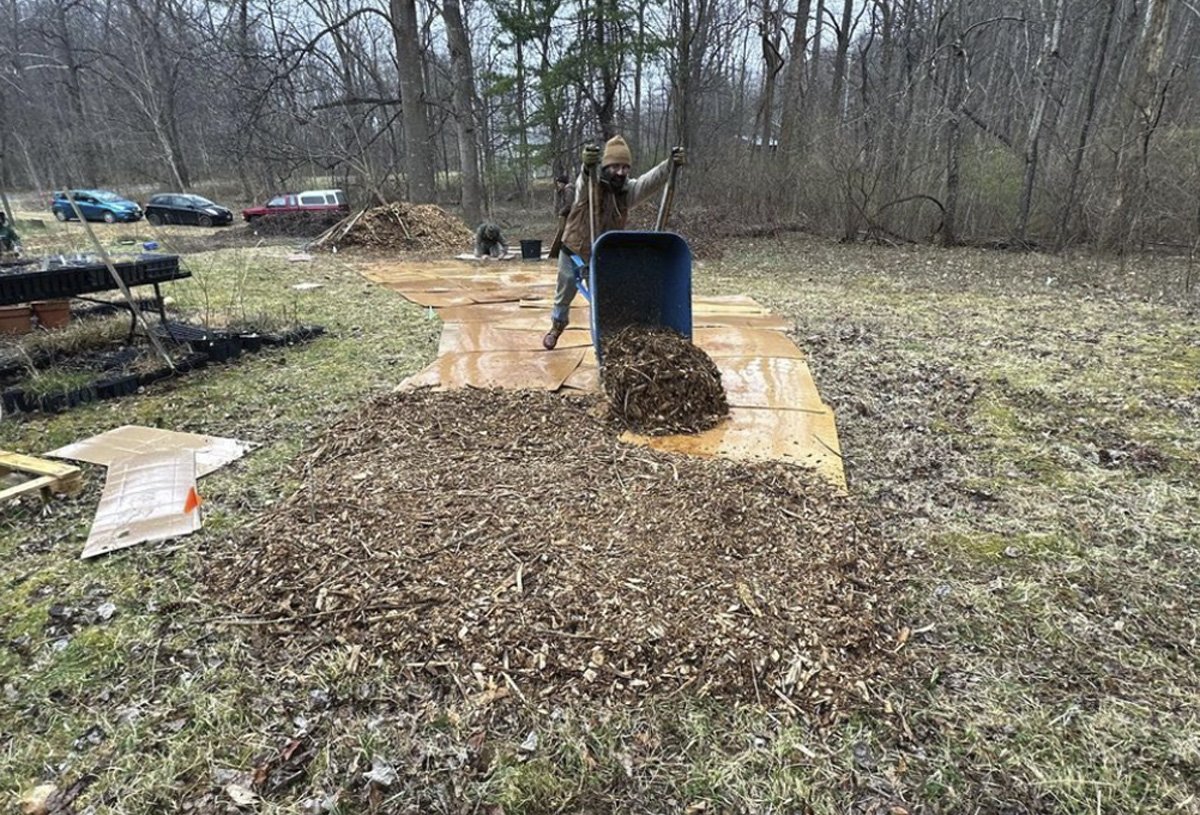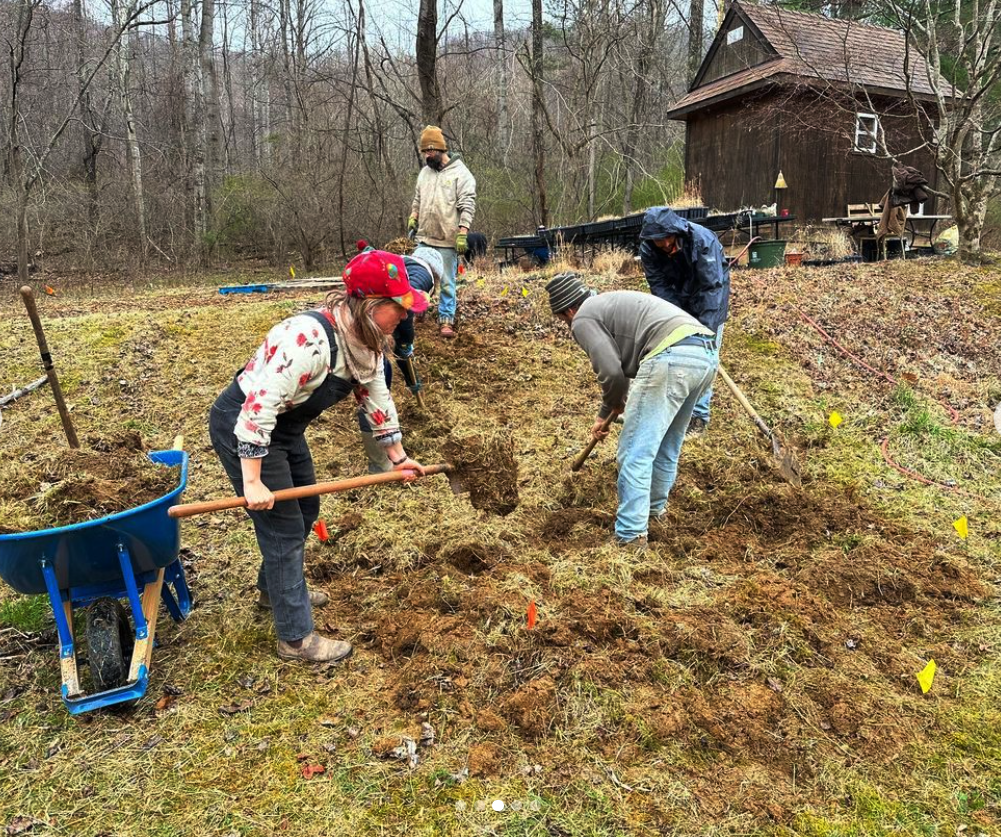
HOW TO PLANT A MEADOW
BY BEN KESSLER
Meadows are lovely places, full of attractive colors, pleasant aromas, melodious sounds, and a delightful feeling of being within a mass of flowers and tall grasses. They are pricelessly valuable to the many wild birds, butterflies, salamanders, and other creatures who rely on native plant communities for food and shelter. Everywhere a meadow is, is life. A meadow is a waystation for migrating monarch butterflies and warblers. It is a mansion to snails and an inn to flower beetles. It can be a part of your home, too.
Tiny meadows fit for a single lawn may not, in isolation, constitute large enough numbers of a given plant species to guarantee an enduring viable population. If there are other small meadows within pollinating distance, the archipelago of flowers may yet support one another and persist down the generations towards a greener future. One meadow can sow the seeds for others.
Establishing a meadow can seem difficult verging on impossible to attempt. Popular conventions of inedible, nonproductive, non-native landscaping- lawns, evergreen topiary hedges, graveled patios, asphalt roads- may seem inevitable and overwhelming. HOAs are annoying and frequently intimidating. Take heart, however, that the legality of covenants forbidding more sensible landscaping is often dubious, and may be challenged and altered from within by active and engaged members. See this inspirational story to see how one might go about doing that. Changing the shape of your home landscape can prove more difficult if you’re renting, but is not impossible.
If you have the good fortune or willful fortitude to exert your own decision-making power over what occurs on the land you inhabit, consider planting a diverse mix of native plants from local genotype lineages. The landscape, including these plants and all the creatures of the ecosystem who depend upon them, will be grateful for a renewed future.
So, how to do it? This guide covers the basic steps of preparing and planting a meadow, prairie, native plant garden, or whatever you like to call it. There are many ways to do this work; this is the method we usually practice ourselves.
1. Observe
Spend as much time as is practical observing the landscape in which you may choose what happens. Usually this is land one legally owns the deed to, but it could include property that your neighbors agree to share in the use of, or public land that either formal permission or institutional neglect has granted you access to. Observe what occurs within this area of decision, and also what occurs around this area, on the land which is beyond your effective influence. Land is contiguous and in no enduring way is it interrupted by the imaginary lines of property ownership we presume upon it. What occurs upstream in one property affects what occurs downstream in another. If you are downstream, you must take into account activities upstream, however undesirable or deleterious, even if you have no immediate expectation of changing those activities. Likewise, what you choose to do within your own zone of influence will affect land bounded by other properties within the watershed, hillside, forest, etc.
Observe where there is light and shade, and how much of each over the course of the day in each of the seasons. Observe which patches of soil are usually moist, and which are usually dry. Observe where rainwater pools, where it erodes, where it runs off in temporary streams, where it soaks in. Observe where nighttime cool air persists into dawn and dusk, and where the day’s heat warms fastest. Observe where animals establish their trails of traversal, feeding, bedding, and escape. Observe your own habitual trails through the landscape, how you get to where you go every day, every week, and every so often. Observe the plants already growing; if you don’t know their names, observe the patterns of their growth: dry grasses, lush foliage, fleshy leaves, trees, thickety shrubs, matting vines, etc.
Take all of the above into account when deciding the placement and shape of your new meadow planting area.
Selecting a mixture of species appropriate to the site is its own entire subject. For inspiration, check out the plant community sections elsewhere on our website.
2. Prepare
Prepare the ground for planting as far in advance as possible. Ideally at least one season ahead of time. Last minute all-at-once installations are possible, but require more immediate maintenance and fill-in work to establish. Plan for prep work ahead of time and follow up work after the installation. No new landscape installation, even one made of all native species, can simply be planted and ignored. Set expectations and budget time to nurture the new meadow towards stability and longevity.
Begin by marking the bounds of the planting area, and the human pathways through it. Contractor flags or sticks of different colors are helpful.
Within this area, exclude or suppress undesirable vegetation. Vigorous perennials with woody roots should be pulled one by one. Cutting the above-ground portion of a perennial off will not usually kill the plant.
Lawn dominated by Eurasian turf grasses should be sheet mulched with at least one layer of cardboard, newspaper to ½” depth, or burlap bags, individual sections overlapping by 3” or more. Use recycled materials, and remove all plastic tape and labels before laying. Smaller patches of lawn can be turfed with a mattock or shovel, the turf stacked upside-down outside of the planting area to form a berm. Over the sheet mulch, lay 1”-3” of well-rotted woodchips, composted leaf mould, or other organic material. We cannot in good conscience recommend use of herbicides for the extirpation of unwanted plants; if you care about the living landscape, do not put toxic substances in the living landscape.
3. Plant
New plantings establish most quickly and enduringly with a mix of plugs and sown seeds. If time and/or budgets are limited and the entire area cannot be planted with plugs, focus on densely planting smaller areas with plugs rather than spreading them around throughout the space. Establish dense patches of plants from plugs, with seed-sown areas surrounding these nodes.
Mix seed with dry sand, rice hulls, non-pressure-treated sawdust, or other loose, light material. Spread judiciously onto the mulched area. Sow seed more thickly than you think is necessary. Sow repeatedly three times, in the late winter, early autumn, and following spring or fall.
Plant plugs through the mulch you established earlier. If there is living turfgrass under the sheet mulch, you can plant plugs, but anticipate much labor within the first two years weeding unwanted grasses from the planting. Dig through the sheet mulch with a trowel or hori hori to plant the plugs.
When planting plugs, be sure to gently but firmly tease apart the roots before putting the plug in the ground. Constricted, looping roots can sometimes damage or kill the plant after a few seasons’ growth. Aerate the soil as you plant; dig a hole a little larger than the plug and crumble clods of dirt with your hands to refill the space. Mix soil from below with the layers of mulch above. Plant no deeper than the root crown, where the above-ground parts of the plant meet the spread of roots.
If money or preparation and/or maintenance time are limited, consider establishing the new meadow in sections, incrementally over the course of seasons or years. The established plants from one area can be used to propagate other areas. Do keep in mind that propagation from too limited a gene pool will result in a population collapse in future, so if possible amend the genetic diversity with later planting or sowing of different genetic lineages of the same species.
4. Edit
Over the course of the next year, tend and amend the planting. Monitor the area on at least a weekly basis, and plan on spending at least one day/month tending the space.
Weed unwanted vegetation resprouting from roots or germinating from seeds in the mulch before it can overwhelm the plants you planted. Every mature ecosystem in our world can be expected to include native and non-native species. Part of the work of humans concerned with environmental well-being includes assisting a trajectory of ecological succession that tends towards resilience. Attempting to extirpate all organisms of a given proscribed type, be it “invasive”, “weedy”, or any other artificial designation, is a fool’s errand. Our world is ever in flux, and the rampant species formerly endemic elsewhere are now permanently rooted within the present and future ecotypes of this place. Undesired plants must be engaged with as part of the landscape’s ecological succession- they are not somehow outside of nature. Beware the call to hate wild nature in any of its aspects: that way leads only to madness and pain.
That being said, if the round-leafed thoroughwort you took care to plant is about to be smothered by a honeysuckle vine, kill the vine with no illusions about what you are doing and why. There are more honeysuckles than thoroughworts around, and while they can coexist eventually, young thoroughwort establishes more swiftly away from an overabundance of old honeysuckle. Traditional, pre-colonial meadow maintenance included regular low-intensity fire, buffalo grazing, and strategic edible and medicinal plant harvesting techniques. Post-occupation, low intensity fire, mowing, and strategic edible and medicinal plant harvesting techniques can all contribute to the competitive advantage of native species which evolved in tandem with similar practices.
When you are not killing plants you deem to be poor companions to your preferred species, plant more of your preferred kinds in the gaps. Most non-native rampant species deemed ‘invasive’ are in fact early succession opportunists who are some of the only organisms able to tolerate difficult conditions such a compacted soils, low organic matter, pollution, erosion to lower subsoil horizons, and soil routinely disturbed by tillage or the enthusiastic excavation of non-native rampant species. The denser the planting of desired native species, the less likely the planting will be to experience overwhelm by non-native rampants. Consider amending the soil of your new meadow every so often with a sprinkling of compost or duff full of native microorganisms from a healthy wild meadow in the vicinity. The healthier the soil, the less of a competitive advantage early successional non-native generalist species have over native species with more finicky preferences for soil nutrition and microorganism companionship.
Expect to engage with your newly planted meadow at least monthly for at least a year, and seasonally on beyond that. Any area where new organisms are introduced, be they native vegetables like corn and beans, non-natives like hollyhocks and peach trees, or local genotype native plants like little bluestem, is something like a garden. Anywhere a human intervenes in the ambient ecological succession, they will have more success in solidifying the successional trajectory to their preferred pattern if they regularly tend that place.
As soon as you sow a seed or pull a weed, you are a part of that landscape, like the birds eating and pooping seeds, like the ants aerating the soil, like the fungi binding roots together, like the wind that brings the frost, like the rain. A fruit orchard and a wildflower meadow are both human-mediated ecosystems; both require human care and maintenance as surely as a beaver swamp requires beavers. Eventually your involvement in the new meadow may seem less intensive and invasive; eventually you may learn how to cause long changes in that place through quiet actions.











